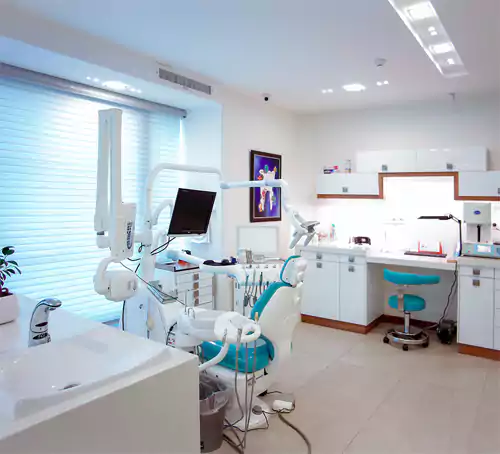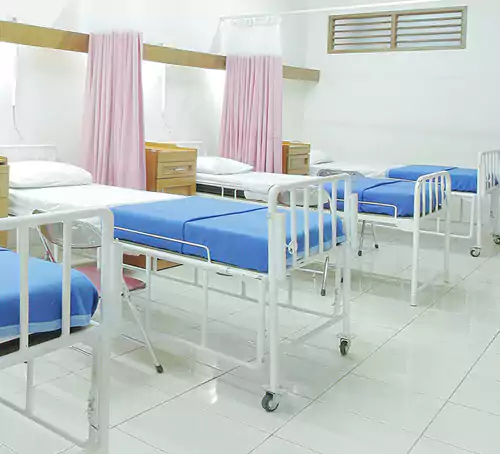Hospital Air Conditioning Industries
Hospitals are very complex environments that require special HVAC system design, maintenance and repair considerations. HVAC systems in healthcare facilities provide a broad range of services in support of populations who are uniquely vulnerable to an elevated risk of health, fire, and safety hazard. These heavily regulated, high-stakes facilities undergo continuous maintenance, verification, inspection, and recertification; typically, operate 24 hours per day, 7 days per week; and are owner-occupied for long life cycles. HVAC systems are responsible for keeping indoor air quality (IAQ) high and providing a safe temperature for patients and staff alike. The air treatment in healthcare facilities is of prime importance. The patients feel more comfortable and heal early if the air circulation, temperature and humidity are maintained as per prescribed standard. Hospitals need a functional HVAC system to stay operational. This is especially true for places like a clean room or an operating room. Air-exchange, humidity, pressure and temperature have to be precise in such environments to minimize the risk of infection for patients. Every hour of the day, the HVAC system needs to contribute to the overall goal of suppressing hospital-acquired infections. According to research by the Centers for Disease Control, one in 25 patients in the U.S. will suffer at least one infection acquired in the healthcare environment.


However, even outside of the operating room, HVAC systems are required to not only keep high IAQ levels, but maintain specific temperatures to minimise bacterial growth throughout the hospital. And not to mention, hospitals have to run 24/7 which leads to huge levels of energy consumption. A well-maintained HVAC system can help reduce operating costs in addition to providing a safe environment. There are stringent standards and many industry guidelines when it comes to the performance of a hospital HVAC system.
HVAC in Healthcare Facility
Increasing interest has been expressed towards intelligent heating, ventilation and air conditioning (HVAC) systems in hospital environments. Hospitals require efficient heating, ventilation and air conditioning (HVAC) systems to maintain good indoor air quality (IAQ), aseptic conditions, and to secure healthy, safe and suitable indoor thermal conditions (i.e. temperature, humidity, air quality and airflow) for the hospital personnel and the patients. Hospital ventilation must be effective for controlling airborne transmission and preventing outbreaks of infectious diseases. A correlation exists between ventilation, air movements in buildings and the transmission of infectious diseases. Poorly designed, maintained (i.e. contaminated) and used HVAC systems are common in hospitals and often lead to poor IAQ.
Effect of breakdown of Hospital HVAC System
- Patient feel uncomfortable
- Risk of hospital infection spread
- Surgical procedures delay
- Emergency situations rerouted to other hospitals
- Fog in the hallways and operating rooms
- Damages to supplies which require refrigeration or lower temp
- Equipment failure
- Financial loss
HVAC & Infection Control
In a hospital environment, there tend to be high concentrations of harmful micro-organisms. From an infection control perspective, the primary objective of hospital design is to place the patient at no risk for infection while hospitalised. The special technical demands include hygiene, reliability, safety and energy-related issues.
Infections, which may result from activities and procedures taking place within the facility, are a cause for great concern. Three main routes responsible for infections are contact, droplet, and airborne transmission, which are quite affected by room design and construction factors. An airborne infectious isolation room is constructed to minimise the migration of air from an isolation room to other areas of healthcare facilities. The risk of being infected through the airborne route is a function of particle concentration. The chance of a particle that is carrying an organism falling into an open wound increases with particle concentration. By reducing the concentration, one can reduce the chance of infection and, hence, the number of patients infected. Recommendations for engineering controls to contain or prevent the spread of airborne contaminants center on general ventilation, air cleaning (primary and secondary filtration), and local exhaust ventilation (source control)
General Ventilation
The most effective means of controlling contaminants, odour and indoor air pollution is through ventilation, which requires simultaneous control of number of conditions :- Air change rates
- Pressure gradient appropriate with class of isolation
- Appropriate air distribution in the compartments being air conditioned
- High quality air filtration including absolute filtration
- Precise temperature and humidity control ensuring maintenance of the intended microclimate







